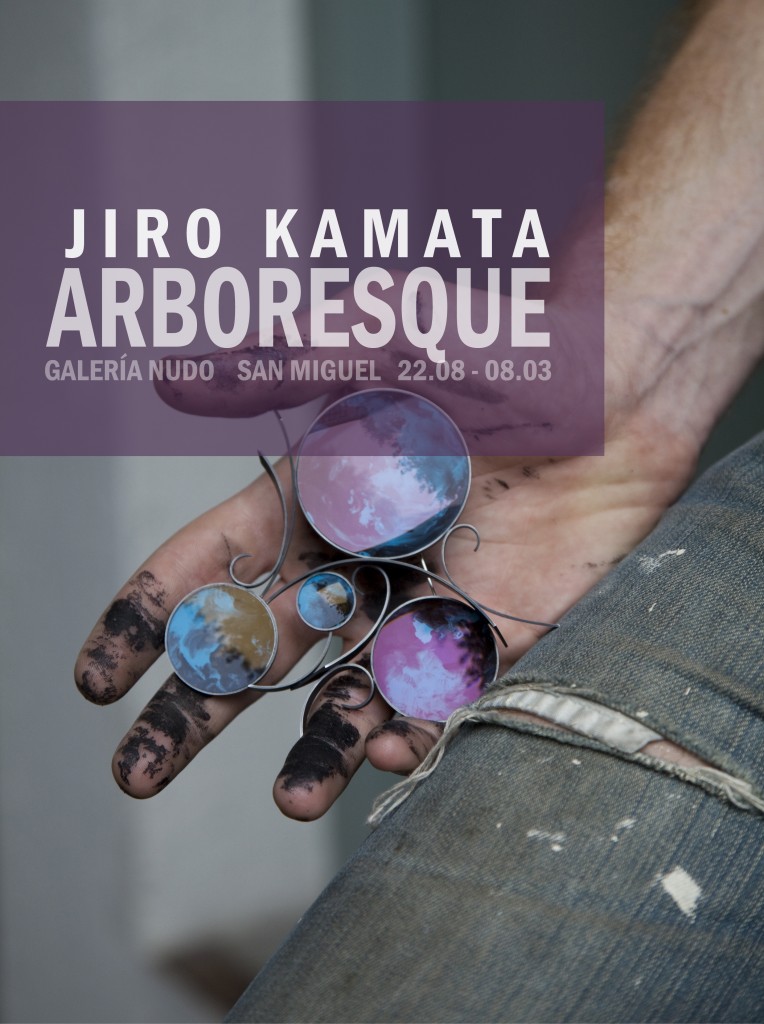Galería NUDO Arte Contempráneo in collaboration with Otro Diseño present the exhibition Arboresque by Jiro Kamata
from 22.02 to 08.03
at NUDO Arte Contemporáneo at Hotel Posada Carmina
Cuna de Allende No 7, Centro, San Miguel de Allende
Opening 22.02.2013 at 19:00 hrs
www.galerianudo.com
The Arboresque Series
In 2010 Jiro Kamata visited Mexico for the first time to exhibit Momentopia, a series he had been working in since 2007. The open, blue sky of Mexico captivated the visiting artist and introduced him to a sensorial experience that led him to explore Mexican color and to develop a profound visual relation with the country. This proved to be a great source of inspiration for Kamata, who understood local colour beyond the abstract theory. His gaze was particularly incisive on the street, where he took time to study both grandiose and vernacular architecture and connect it in a remarkable way why the people who produce and experience it. The hand-forged wrought iron detailing, so abundant in colonial towns, attracted Kamata’s attention. Arabesque, a form of decoration based on rhythmic linear patterns of scrolling and interlacing foliage and tendrils, originated within the Islamic art and became an important part of Spanish architecture which was later exported to Mexico. The irresistible combination of unexpected colour palettes and the capricious shapes of the iron arabesques led the Momentopia series to a surprisingly fresh and colorful path.
Momentopia represent moments captured by photographic cameras, using old camera lenses, minimal compositions and a rather monochromatic palette where faint and fleeting color is occasionally provided by the different coatings of each lens. The trip to Mexico led Kamata to an inexorable and organic development of Momentopia. Camera lenses are again the starting point of Arboresque. But, impeccably encased in oxidized silver profiles, the precise and constricted shapes of Momentopia, branch out in Arboresque, creating sinuous and mysterious patterns that remind of unfinished calligraphic strokes of a language we do not fully recognize.
An unusual, bolder use of color is immediately noticed in Arboresque, where most of them display bi-color combinations: an eroding green wall, revealing layers of deep purple beneath; a blue pickup truck, brimming with yellow marigold blossoms; a woman in a white dress, pink flowers in her hair, spinning to the rhythm of a festive orchestra; the deep blue sky of a Mexican evening, stained with the darkest rain clouds. By applying acrylic and acetone and using the Japanese ancient suminagashi technique to decorate paper, Kamata masterfully re-interprets Mexico’s coulorful palette.
Kamata has experienced Mexico in a profound, reflective and sensuous way. He faced an ancient, complex and fascinating country in the most visual and aesthetic way, unafraid of playing and experimenting with images, emotions and memories. While eating tacos, dinking tequila and dancing danzon, he analyzed the Mexican life and landscape with curious and humorous eyes. His findings, embodied in the new jewellery series, seem to say: ‘look, here is another way of portraying Mexican colour’. As a Mexican architect well acquainted with the colours of my country, I can only agree.
Valeria Siemelink




